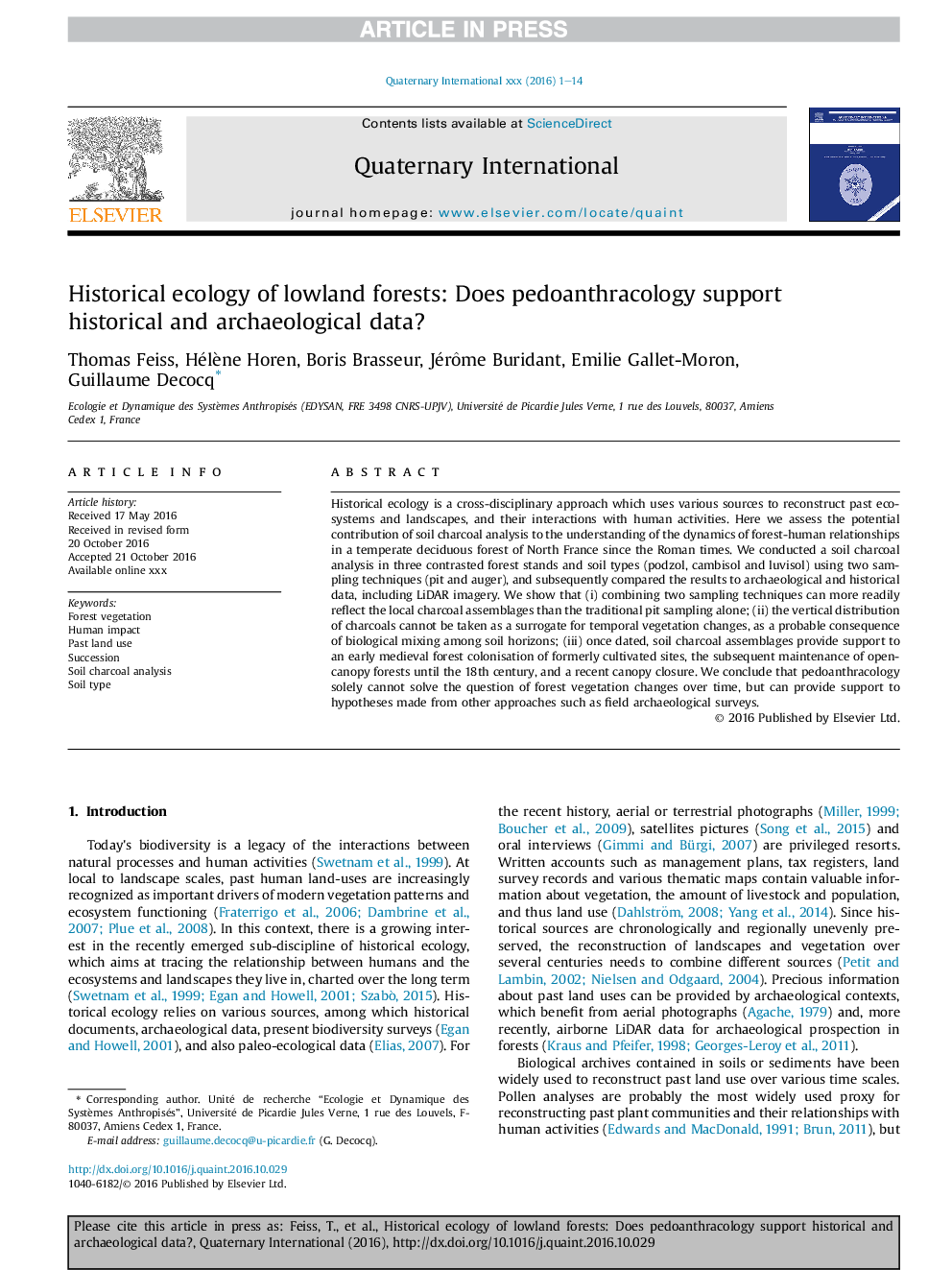| Article ID | Journal | Published Year | Pages | File Type |
|---|---|---|---|---|
| 7451234 | Quaternary International | 2017 | 14 Pages |
Abstract
Historical ecology is a cross-disciplinary approach which uses various sources to reconstruct past ecosystems and landscapes, and their interactions with human activities. Here we assess the potential contribution of soil charcoal analysis to the understanding of the dynamics of forest-human relationships in a temperate deciduous forest of North France since the Roman times. We conducted a soil charcoal analysis in three contrasted forest stands and soil types (podzol, cambisol and luvisol) using two sampling techniques (pit and auger), and subsequently compared the results to archaeological and historical data, including LiDAR imagery. We show that (i) combining two sampling techniques can more readily reflect the local charcoal assemblages than the traditional pit sampling alone; (ii) the vertical distribution of charcoals cannot be taken as a surrogate for temporal vegetation changes, as a probable consequence of biological mixing among soil horizons; (iii) once dated, soil charcoal assemblages provide support to an early medieval forest colonisation of formerly cultivated sites, the subsequent maintenance of open-canopy forests until the 18th century, and a recent canopy closure. We conclude that pedoanthracology solely cannot solve the question of forest vegetation changes over time, but can provide support to hypotheses made from other approaches such as field archaeological surveys.
Related Topics
Physical Sciences and Engineering
Earth and Planetary Sciences
Geology
Authors
Thomas Feiss, Hélène Horen, Boris Brasseur, Jérôme Buridant, Emilie Gallet-Moron, Guillaume Decocq,
